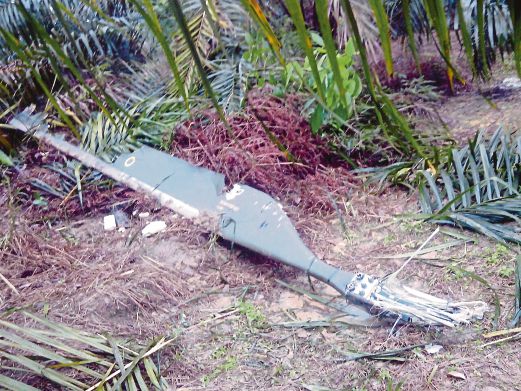INVESTIGATORS probing the helicopter crash that killed Tan Sri Dr Jamaluddin Jarjis and five others are looking at a host of new angles, as more questions have emerged after the black box data was retrieved.
It has now emerged that while the passengers were “very chatty” as the Dauphin AS365N2 flew from Kuantan, the cockpit voice recorder (CVR) revealed that nobody said anything for a while before it went down. This includes the pilot, Captain Clifford William Fournier, and Kyrgyzstan national Aidana Baizieva, who was in the co-pilot’s seat.
Jamaluddin and principal private secretary in the Prime Minister’s Office Datuk Seri Azlin Alias, who were reportedly seated next to each other behind the crew, were also quiet. The rest of the passengers, said to be seated in the last row, were SP Baiduri Sdn Bhd chief executive officer Datuk Tan Huat Seang and Jamaluddin’s bodyguard, Lance Corporal Razakan Seran.
“Only the sound of their breathing was picked up by the CVR. “Those on board spoke on various subjects irrelevant to the ongoing investigation ... then there was a lull for several minutes right up to the crash. “But let there not be any speculation on this, as their going quiet could be due to many reasons, including fatigue,” a source told the New Straits Times yesterday.
The source also revealed that data from the CVR suggested that the helicopter could have been operated by both Fournier and Baizieva. “There is nothing wrong with Fournier bringing his friend on board the flight or her sitting next to him. “The data, however, suggests that (Baizieva) was actively participating in the flight operations ... It should not have been that way,” the source said, adding that the duo’s exchanges were mainly on the flight’s operations and that the recording would be used in the course of the investigation. It was reported that Baizieva, who was 25, had been taking flying lessons from Fournier.

The NST was also made to understand that the helicopter was flying at about 2,000ft (about 610m) over Semenyih, before it suddenly dropped altitude. This, the source said, was when all communications went dead. He added that investigators had strong grounds to believe that there was an explosion on board before the helicopter went down.
“Based on investigations at the crash site, investigators concluded that some parts of the helicopter were blown off in the explosion. “The investigations and data retrieved have not yet helped in ascertaining if it nose-dived or spiralled down,” said the source. “Evidence from the cockpit voice recorder is part of the evidence.
“Although we did not get all the answers from there, it has helped investigators in their on-going probe,” he said, adding investigators believed that a power cut caused by the explosion caused both the flight data recorder (FDR) and CVR to stop operating. He said investigators would be relying heavily on accounts of witnesses. Sources close to the investigation told the NST that investigators were also looking for answers into why the CVR, which was still functioning in the few seconds that the helicopter began to plunge, failed to pick up any signs of distress from those on board. A
viation expert Associate Professor Captain Dr Mohd Harridon Mohamed Suffian said the scatter of the debris from the helicopter suggested that its parts could have come apart at roughly 1,500ft (457m) from the ground. He said that if witness accounts, including by those who saw smoke billowing from where the black box was located, were true, the explosion would have severed the communication cable device and cockpit voice recorder.
“This could be why the distress call could not go through and possibly why the explosion was not recorded in the black box.” Meanwhile, sources told the NST that the Malaysian authorities investigating the crash would likely have to engage independent experts in the on-going probe, as the Air Accident Investigation Bureau (AAIB) could not commit to carrying out the critical process of recreating the “possible end scenario” of the April 4 crash.
“This intricate, in-depth investigation process will, among others, involve test pilots to simulate the crash. “Data from the flight data recorder analysed in the United Kingdom by the AAIB last week also needs to be probed further. “We have all the data, but our investigators do not have the proper equipment and expertise to process it line by line,” one of the sources said. To this, Harridon, who is also Universiti Kuala Lumpur research and innovation head, said the United States’ Federal Aviation Administration (FAA) would be an option for the government, as they had extensive experience in air crash investigations, including in recreating the final moments of the crash. - NST




No comments:
Post a Comment
Note: Only a member of this blog may post a comment.